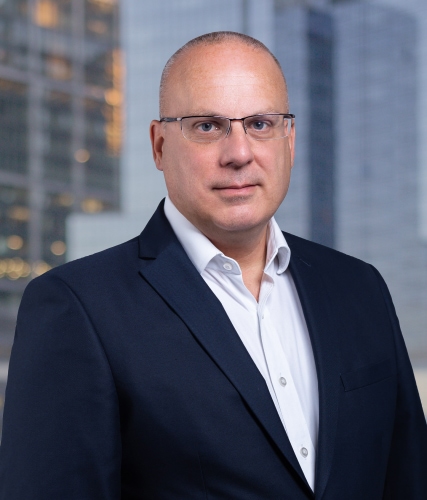
As this period of lockdowns continues, I wanted to reflect on my last 6 months leading the Citisoft EMEA practice. Some readers may know that I had a boomerang moment: I returned to Citisoft in April 2020 after a decade away and am “renewing and growing” the business from the UK. It has been a busy few months, and now that I have time to take a breath, I am wondering if I need to re-position the work we’re doing here—or at least to rephrase it.
To renew is to “resume (an activity) after an interruption.” This suggests that Citisoft paused operations in EMEA and with my arrival has restarted. This is manifestly incorrect. We have been present in EMEA since 1986 with consultants delivering to clients without interruption. You cannot renew something you never stopped. Ultimately, I have landed on the word reinvigorate, which I am defining as ‘to give new energy or strength to.’ I now think this most accurately represents what we have been doing and is the basis of our plan going forward.
So, if we are reinvigorating Citisoft EMEA, what does that mean? The last decade has brought immense change to the financial services market in EMEA, and particularly in the UK. The software and processes that carried us through decades of market highs and lows were rapidly outpaced by emerging technologies, new investment strategies, and evolving regulation. Where the industry stands today is in stark relief to where it was in 2010. When I say we’re reinvigorating the EMEA practice, what I mean is that we’re embracing this change and leaning into new opportunities to help our clients grow.
With that in mind, I thought I’d take the opportunity to weigh in on a few trends we’ve seen impact our business and our clients this year.
Resiliency post-COVID 19
Much of the rhetoric around future-proofing and resiliency post COVID-19 has been focused on the shift to remote work and investments in technology. However, the broader impacts on the pandemic and the social unrest that has followed has prompted us and our clients to think about resiliency in a broader context. If we’ve learned anything from 2020, it’s that none of us operate in a vacuum—we are impacted by public health, social justice, policy decisions, and the state of our communities. This pandemic has brought to light our interconnectedness and as we map a path forward, we’ve been taking this as an opportunity for reflection by asking ourselves what role we want our business and our industry to play in the broader community.
At Citisoft, we’ve formed a Diversity and Inclusion forum, held firm-wide training on bias, and reached out to local colleges to form partnerships that will help bring a more diverse pool of candidates to financial services. We’ve seen our clients and many industry players do the same and we look forward to seeing the face of our industry evolve as this change accelerates.
Operational dividends
The asset manager of ten years ago was operating in a post-financial crisis capacity—that is to say, very lean. Over the last decade, the economy rebounded, and business began to scale up again, investing in non-core projects and teams. In the current moment, economic uncertainty is once again top of mind. By and large, we have not seen our clients need to make cuts to their operating budgets but there’s no doubt that costs and efficiencies will be a consideration as firms plan for 2021.
As our clients plan for next year, the focus needs to be on making technology and operations decisions that are both efficient and cost-sensitive to the end investor. Businesses should be thinking about dividends that can be generated from operations. By leveraging automation, integrating enterprise technology, or expanding outsourcing relationships, asset managers can free up resources that can be re-invested into investment strategy.
Industry Consolidation
The asset management industry has been polarised into big and small players over time due to the impact of regulation and fee pressure. As organisations get bigger, their buying power impacts the whole industry, and the power is in the hands of the buyer. Within software and service providers, there has been a race to the bottom on pricing, which keeps these vendors from having the capital needed to invest in new technology or better service. Likewise, asset managers remain on provider legacy systems, inhibiting them from making better investment decisions. Ultimately, this will impact the end investor—there is, after all, a hidden cost to low fees.
As mergers and acquisitions continue to accelerate, the gulf between large managers and small managers continues to widen. A great example of this is in the trend of front-to-back service offerings. While this has advantaged large asset managers, small firms aren’t looking for the same breadth of service. In the UK and Europe, there needs to be a tier two solution and secondary market for the smaller players who have the ambition of bigger players. Service providers would uncover new opportunity by focusing on smaller asset managers and solutions that are cost efficient for those organisations. By segmenting the market, software and service providers will enable healthy innovation from all tiers of the industry.
As we look to 2021, there’s a lot to be hopeful about. I’m looking forward to emerging from this pandemic with a re-invigorated focus on the future of technology and new possibilities in asset management, the physical and social health of our communities, as well as a new appreciation for the workplace and our colleagues. I feel fortunate to be part of a company that has paved the way for so many firms over the previous three decades but has never stopped evolving. It’s an honour to continue growing our practice here in EMEA and to continue growing alongside our clients.









Comments